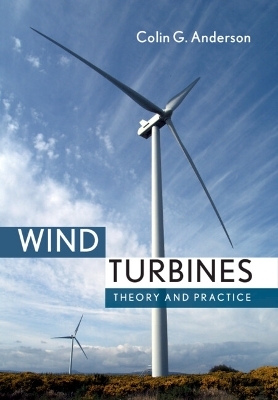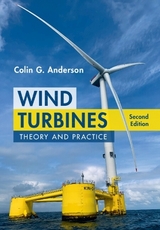
Wind Turbines
Theory and Practice
Seiten
2020
Cambridge University Press (Verlag)
978-1-108-47832-8 (ISBN)
Cambridge University Press (Verlag)
978-1-108-47832-8 (ISBN)
Zu diesem Artikel existiert eine Nachauflage
This textbook explains the key aspects of wind turbine technology and its application in a single readable text. Covering a broad range of multi-disciplinary topics, this reference provides a refreshing overview of the subject that is suitable for undergraduate students, postgraduate students, and professionals in the field of wind energy.
In the multi-disciplinary field of wind energy, students and professionals can often be uncomfortable outside their own specialist areas. This essential textbook explains the key aspects of wind turbine technology and its application in a single readable text. Covering a broad range of multi-disciplinary topics, including everything from aerodynamics through to electrical and control theory, to structures, planning, economics, and policy, this reference is an excellent toolkit for undergraduate students, postgraduate students, and professionals in the field of wind energy. Key concepts, including more challenging ones such as rotational sampling of turbulence, vortex wake structures, and reactive power management, are explained using clear language and simplifying illustrations including experimental graphs, photos, and line drawings.
In the multi-disciplinary field of wind energy, students and professionals can often be uncomfortable outside their own specialist areas. This essential textbook explains the key aspects of wind turbine technology and its application in a single readable text. Covering a broad range of multi-disciplinary topics, including everything from aerodynamics through to electrical and control theory, to structures, planning, economics, and policy, this reference is an excellent toolkit for undergraduate students, postgraduate students, and professionals in the field of wind energy. Key concepts, including more challenging ones such as rotational sampling of turbulence, vortex wake structures, and reactive power management, are explained using clear language and simplifying illustrations including experimental graphs, photos, and line drawings.
Colin G. Anderson is a consulting engineer specialising in renewable energy technology and an adjunct lecturer at the School of Engineering, University of Edinburgh, where he teaches a course entitled Principles of Wind Energy.
1. Introduction; 2. The wind and its characteristics; 3. Aerodynamic theory; 4. Rotor design and performance; 5. Electrical aspects; 6. Control; 7. Structural loading and response; 8. Rotor blade technology; 9. Siting and installation; 10. Planning and environment; 11. Economic and political considerations.
| Erscheinungsdatum | 21.02.2020 |
|---|---|
| Zusatzinfo | Worked examples or Exercises; 3 Line drawings, color |
| Verlagsort | Cambridge |
| Sprache | englisch |
| Maße | 182 x 260 mm |
| Gewicht | 830 g |
| Themenwelt | Technik ► Elektrotechnik / Energietechnik |
| Technik ► Fahrzeugbau / Schiffbau | |
| Technik ► Luft- / Raumfahrttechnik | |
| Technik ► Umwelttechnik / Biotechnologie | |
| ISBN-10 | 1-108-47832-8 / 1108478328 |
| ISBN-13 | 978-1-108-47832-8 / 9781108478328 |
| Zustand | Neuware |
| Informationen gemäß Produktsicherheitsverordnung (GPSR) | |
| Haben Sie eine Frage zum Produkt? |
Mehr entdecken
aus dem Bereich
aus dem Bereich
Wegweiser für Elektrofachkräfte
Buch | Hardcover (2024)
VDE VERLAG
CHF 67,20
Technologie – Berechnung – Klimaschutz
Buch | Hardcover (2023)
Hanser (Verlag)
CHF 55,95



